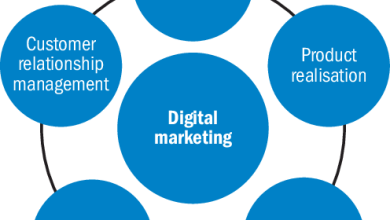How to use Technology to Streamline and Optimize your Business Processes?

Technology is now the critical driver of competitive advantage for any business. The evolution of business processes with technology seems to be inevitable. After the pandemic, the reliance on technology has increased more than ever before. As per Forbes, 97% of the global companies accelerated their adoption of the latest technologies and believed that it is needed for sustenance.
Technology is now vital to understanding the customers, optimizing processes and workflows, manage operations and supply chain. Earlier businesses relied on a solid product, but now the focus is more on processes and how to make them better and more efficient.
Why is it important to streamline and optimize business processes?
A constant focus on improving the processes results in better business outcomes. If you can focus on the process efficiencies at the right time in the right way, you can achieve success in no time. What else do efficient processes bring in?
- Enhances your customer confidence
- Brings more consistency to your workflows
- Enables better outcome planning
- Adds more controls to gain visibility
- Employee satisfaction and stakeholder engagement are visible in the outcomes
Let us the role of technology in streamlining your business processes.
The Role of Technology in Improving Efficiencies in Business Processes
Communicating, collaborating, and automating manual tasks are simpler ways to streamline and optimize business processes. How do we do these with technology? Many tools and technologies have emerged in the recent past to improve these aspects of business processes. But for all of them to succeed, data is one critical asset that needs to be leveraged for insights into business processes. Let us look at a few technology areas that have emerged recently to optimize business processes.
-
Data Management –
How many processes do you have in your organization? Are you lost in the process of gaining visibility in every process? How to fix this? The first step to understanding any process starts with storing and managing large amounts of data related to every process. As the volume of data continues to explode for every process, it is essential to include the latest technologies like cloud data warehousing, data lake, and data mesh in your information architecture to process this vast amount of data.
What else? An end-to-end data engineering service can save your time inefficiently storing and managing the data for every process. Data engineering and management is not about storage but includes data quality, security, privacy governance, and master data management. Most businesses invest a lot of resources in data management. So, it is better not to overlook this regularly.
-
Cloud Computing –
Tight budget constraints to manage the ever-increasing IT infrastructure were the impetus to the cloud transformation before the pandemic. Moreover, now it is about accessibility, security, governance, and data processing from anywhere in the evolving virtual workplaces.
Cloud computing allows organizations to rapidly adapt to emerging technologies in no time, facilitating innovation and customer satisfaction. It is also easier to integrate and store data in a central repository for better collaboration. When it comes to cost, on-premises infrastructure costs are very high and beyond control when compared to the cloud, which follows the pay-per-use model.
-
Automation –
Do you have repetitive tasks that consume a lot of manual work? Streamlining workflows and processes is nothing but reducing unnecessary repetitive steps and manual workloads. Simple tasks like invoice generation usually involve a lot of manual steps, and usually, these steps are the same for multiple invoices generated.
Other simple automation tasks involve:
- Notification alerts about the task status for respective stakeholders
- Automated messages for customer requests
- Automated document management and processing
- Employee onboarding – Personal information, company policies, and culture
- Marketing alerts for assets and communication
These are just a few examples; a lot more is possible with a comprehensive Microsoft Power Platform beyond the traditional workflow automation.
-
Reporting and Analytics –
What do you do with all the data collected about the processes? Even if you have large volumes of data, it does not speak for itself. Utilizing BI tools provides an outline of the performance of each process. The vital element here is defining the KPIs that give insights into the business processes.
Generating reports may not provide a holistic picture, a few analytics models predict the outcomes and customer behavior crucial for optimizing business processes. Understanding the customer is not a job done by sales and marketing; analyzing every customer’s interaction with all the business processes helps the organization develop a 360-degree view of the customer.
-
Artificial Intelligence –
AI is now common everywhere across industries and every business process. Organizations deploy AI to better understand their customer behavior, reduce costs, transform their processes, increase revenue, and boost profit margins.
The applications of AI are spanned across all enterprise operations, including intelligent process automation, predictive models for demand and customer behavior, 24/7 virtual customer support, and automation of communication and collaboration.
AI can help in streamlining business processes by:
- Minimizing costs with intelligent automation
- Enhancing personalized interactions with customers
- Improving data-driven decision making
- Accelerating time to market for products/services
- Virtual Assistants – Chatbots are now common for every business to transform customer service and stakeholder interactions with the companies.
Chatbots serve businesses by providing information for their customers, answering simple information questions related to the company, nurturing business leads, engaging new prospects/customers, and automating internal and external processes.
It is not possible for businesses to streamline their processes by utilizing only one of the above technologies. All of them need to be considered in unison and according to the process for better efficiencies. Technology evolves rapidly, and organizations need to reconsider their use cases as required constantly.






